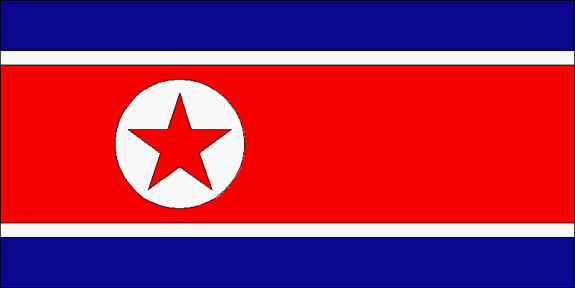





North Korea�s chemical warfare program is believed to be mature and includes the capability, since 1989, to indigenously produce bulk quantities of nerve, blister, choking and blood chemical agents as well as a variety of different filled munitions systems. North Korea is believed to possess a sizable stockpile of chemical weapons, which could be employed in offensive military operations against the South. North Korea has also devoted considerable scarce resources to defensive measures aimed at protecting its civilian population and military forces from the effects of chemical weapons. Such measures include extensive training in the use of protective masks, suits, detectors, and decontamination systems. Though these measures are ostensibly focused on a perceived threat from U.S. and South Korean forces, they could also support the offensive use of chemical weapons by the North during combat. North Korea has yet to sign the Chemical Weapons Convention (CWC) and is not expected to do so in the near-term, due to intrusive inspection and verification requirements mandated by the agreement.
North Korea maintains a number of facilities involved in producing or storing chemical precursors, agents, and weapons. North Korea has at least eight industrial facilities that can produce chemical agents; however, the production rate and types of munitions are uncertain. Presumably, sarin, tabun, phosgene, adamsite, prussic acid and a family of mustard gases, comprising the basis of KPA chemical weapons, are produced here. North Korea has the capability to produce nerve gas, blood agents, and the mustard-gas family of chemical weapons.
In the assessment of US intelligence services, their reserves, accommodated in perhaps half a dozen major storage sites and as many as 170 mountain tunnels, are at least 180 to 250 tons, with some estimates of chemical stockpiles run as high as 5,000 tons. In May 1996 ROK Foreign Minister Yu Chong-ha reported to the National Assembly that it was estimated that North Korea possessed approximately 5,000 ton of biological and chemical weapons. Given the extensive production facilities, this later estimate may constitute the low end of the actual stockpile.
North Korea is capable of producing and employing chemical weapons that virtually all the fire support systems in its inventory could deliver, including most of its artillery pieces, multiple rocket launchers (including those mounted on CHAHO-type boats), and mortars. Some bombs the Air Force employs also could deliver chemical agents, as could the FROG or the SCUD missile. Chemicals could increase the impact of a surprise attack. If the North should use this option, it would have an advantage over forward-deployed South Korean and US forces. Nonpersistent chemical agents also could be used to break through defensive lines or hinder a South Korean counterattack's momentum. Persistent chemical agents could be used against fixed targets in the rear areas, such as command and control elements, major lines of communications, or logistic depots. Not only do these weapons enhance North Korea's offensive capabilities, but this chemical capability could deter South Korea or the United States from using chemicals during hostilities. In any attack on the South, Pyongyang could use chemical weapons to attack forces deployed near the DMZ, suppress allied airpower, and isolate the peninsula from strategic reinforcement. North Korean military units conduct regular NBC defensive training exercises in preparation for operations in a chemical environment. North Korea has chemical defense units at all levels of its force structure. These units are equipped with decontamination and detection equipment. North Korean military personnel have access to individual protective masks and protective suits. Since 1990, Pyongyang has placed high priority on military and civilian chemical defense readiness. It has mandated operational training in chemical environments as an integral part of armed forces training and is trying to equip all military forces, including reserves, with full protective gear. In addition, the leadership has required broad segments of the population to engage periodically in simulated chemical warfare drills. Pyongyang has emphasized building and installing collective protection equipment at military production and civilian alternate wartime relocation sites, directing that the entire population be issued protective masks.